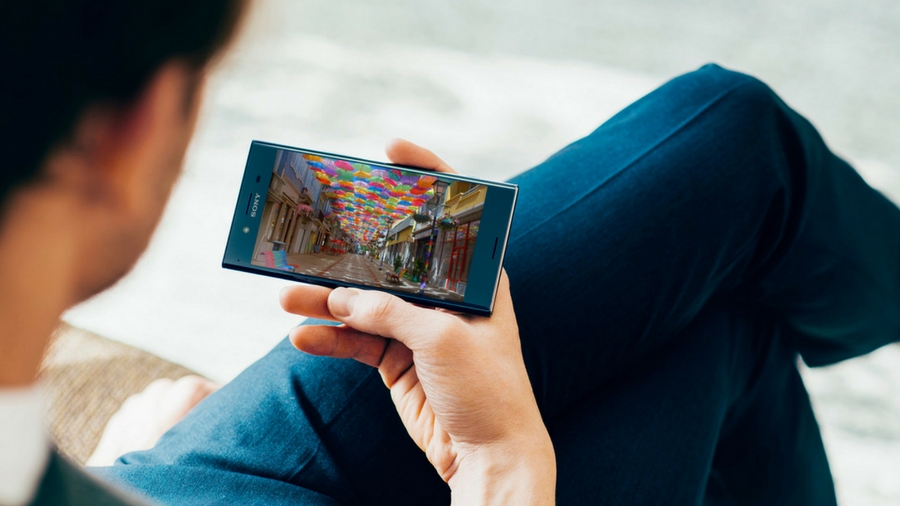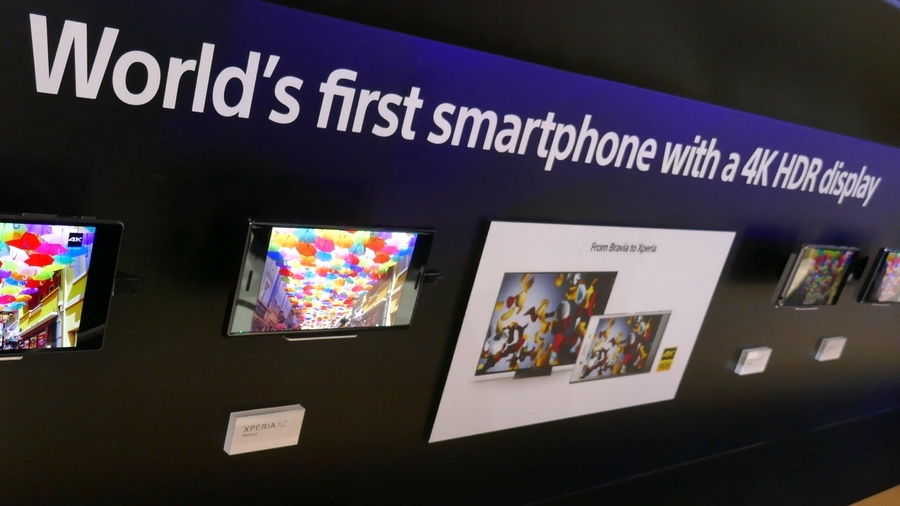How to get the best out of your phone display

How does your phone stack up when it comes to picture quality? Watching video on a phone used to be about convenience over quality, but that's no longer true, with many of us using our phones as our primary screen for social videos, for TV, for movies… for everything.
If you travel a lot, either commuting or sitting on planes and buses – and especially if you fly in and out of the Middle East and are subject to the gadget ban – it's likely that you watch a lot of TV downloads and movies on your phone.
And you want them to look perfect, as good as a home cinema. Preferably even better. In which case you’re in luck, because here we'll show you how to rate a phone by its screen, and get the best from it wherever you watch.

How to choose the right phone display
Size is important, though the term 'phablet' to describe phones with 5.5-inch+ screens is falling out of use. After all, the Apple iPhone 7 Plus, Google Pixel XL and Samsung Galaxy S7 Edge all have a screen that size.
Bigger is often better for phones – so the even larger 5.7-inch screen of the LG G6 and the 5.8-inch and whopping 6.2-inch curved edge 'Infinity Display' screens of the Samsung Galaxy S8 and Samsung Galaxy S8 Plus will find favor for video fanatics.
But more important is the display technology. Here it's a battle between IPS LCD and AMOLED. AMOLED screens boast better black levels and power efficiency, and wider viewing angles – and will probably soon dominate the entire smartphone market – though the LCD display on the iPhone 7 and 7 Plus is almost as good (yet Apple may soon move to AMOLED too).
Whatever the display technology, go for a high-end phone from Apple, LG or Samsung and you'll have a display with wide color gamut, a standard called DCI-P3 that's usually associated with TVs.
Sign up for breaking news, reviews, opinion, top tech deals, and more.
Amazon and Netflix are also both now offering HDR downloads to phones that can handle it, but only the Samsung Galaxy S8, Galaxy S8 Plus and LG G6 currently have displays capable of showing HDR. These are niche areas, but bound to grow.
How to choose the right shape
Smartphone displays are also stretching. Not long ago we would have said that the 16:9 aspect ratio – better known as widescreen in TV land – was universal among smartphones, but already LG's G6 and Samsung's Galaxy S8 have toted 18:9 and 18.5:9 screens.
Does wider mean better? We're not convinced, and nor does the current trend for bezel-less, frame-less phones like the Xiaomi Mi Mix and (to a lesser degree) the Samsung Galaxy S8 make much sense, optically-speaking.
Having a small area of black around the edge of a video actually increases the human eye's perception of contrast. Sloping edges to a phone's screen might look good, but it may make video seem less punchy.

How to choose the right phone resolution
Phone manufacturers go on and on about resolution. Ignore them. Do you need a 4K phone? No, you probably don’t. Resolutions above 1080p are not that obvious to the human eye on small screens.
“The human eye can only see 0.1 of a degree resolution – you can put ten pixels there, but the eye is only going to see one,” says Ioannis Katsavounidis, Senior Research Scientist at Netflix.
“Keep that in mind when you hear about 4K and 8K – it all depends on where you hold the phone.” Amazon Prime Instant Video is in line to offer 4K downloads, but in our demos it's HDR that trumps 4K.
HDR on a phone looks amazing, with better highlights, deeper contrast and punchier colors, while 4K looks invisible.
How to watch a film
Don’t think you need help watching a film on a phone? If you want to get the most from your phone’s display, you almost certainly do.
It’s not the pixels on your phone that matter, but the resolution of the content you’re watching. “There is a golden rule in visual science for HD called the rule of three-eighths,” says Katsavounidis, who explains that you should take the height of your phone and times it by about three, and watch from there.
“If you’re watching in three-eighths, you have the optimal distance for the pixels in the content you’re watching,” adds Katsavounidis. “For standard definition, the rule changes to five-eighths.”
If you're downloading content from the Netflix and/or Amazon Prime Video apps, it pays to go for top quality. For Netflix, go to App Settings > Video Quality and choose the 'Higher Quality' option.
In Amazon Prime Video, go Settings > Stream & Download > Download Quality and choose 'Best'. One hour is about 1GB on these settings because it uses a high bitrate encode, which lacks any blockiness.
- 1
- 2
Current page: Choosing the right screen shape, resolution and video quality
Next Page The best phones, stands and headphones
Jamie is a freelance tech, travel and space journalist based in the UK. He’s been writing regularly for Techradar since it was launched in 2008 and also writes regularly for Forbes, The Telegraph, the South China Morning Post, Sky & Telescope and the Sky At Night magazine as well as other Future titles T3, Digital Camera World, All About Space and Space.com. He also edits two of his own websites, TravGear.com and WhenIsTheNextEclipse.com that reflect his obsession with travel gear and solar eclipse travel. He is the author of A Stargazing Program For Beginners (Springer, 2015),